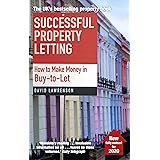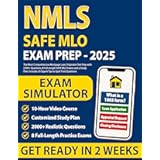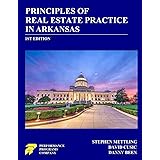Navigating the real estate market can feel overwhelming. Many aspiring investors face this challenge. Understanding the core rules of real estate investing is crucial. This article expands on insights from Robert Kiyosaki, Kim Kiyosaki, and Grant Cardone. Their discussion offers valuable perspectives for beginners.
Success in real estate demands careful consideration. Different strategies exist for acquiring wealth. A solid foundation of knowledge is essential. This guide explores key areas discussed by these experts. It provides actionable information for new real estate investors.
Understanding Current Real Estate Market Dynamics
The real estate landscape is constantly evolving. Today’s market presents unique opportunities and challenges. Grant Cardone highlights a “super cycle.” This unprecedented period sees significant shifts. Property values may not have kept pace with inflation.
Trillions of dollars have been printed. This monetary expansion impacts asset prices. Real estate has appreciated, but perhaps not enough. Cardone suggests cap rates could compress significantly. This indicates a tightening market for investors.
Migration patterns also shape market activity. People are moving from certain states. High-tax or politically “crazy” areas are being exited. States like Arizona, Texas, Florida, Utah, Nevada, and the Carolinas see influxes. These regions offer potentially higher growth for real estate investments.
The buyer demographic has shifted since 2010. First-time buyers are less prevalent. Wealthy individuals are often buying multiple homes. Many pay cash or put down 50% or more. This dynamic leads to fierce competition, particularly for single-family homes.
Funding Your First Real Estate Investment
A common hurdle for beginners is capital. Many believe personal funds are required. However, using other people’s money (OPM) is a key strategy. Banks are a traditional source of OPM. Grant Cardone, however, historically avoided public fundraising.
He preferred using bank financing initially. This approach minimized personal liability. His early multifamily deals were funded by other businesses. Hard work and reinvestment built his initial portfolio. This allowed for significant growth over two decades.
Today, direct capital raising is possible. Platforms like Instagram and Facebook are utilized. Cardone has raised substantial amounts, like $6 million in 60 minutes. He secured $700 million with minimal ad spend. This process connects accredited and non-accredited investors directly.
This method bypasses traditional brokers and middlemen. It offers opportunities for everyday investors. They can access large, institutional-quality deals. These might be $80 million, $150 million, or even $230 million properties. Such access was historically limited to major funds like Blackstone or Goldman Sachs.
However, raising capital carries immense responsibility. Investors’ money must be protected. Kim Kiyosaki emphasizes this point. Without experience, it can be risky. Due diligence is paramount when managing investor funds.
Property Management: The Foundation of Success
Acquiring a property is only half the battle. Effective property management is crucial. Robert Kiyosaki believes this is the harder part. Managing tenants and maintaining the asset requires skill. Legal aspects and contract adherence are vital.
Property damage by renters can be a major issue. Mistakes in management can be costly. Even experienced investors face challenges. The COVID-19 pandemic highlighted this. Eviction moratoriums impacted landlords significantly.
For smaller investors, self-management is common. However, it limits scalability. A mom-and-pop landlord can only handle so many units. Growing a portfolio often requires professional management. Kim Kiyosaki partnered with Ken McElroy. He specializes in managing 150 units or more.
Professional management provides expertise. They handle day-to-day operations. This includes tenant screening, maintenance, and legal compliance. It frees up an investor’s time. This allows focus on acquiring more assets.
Starting Small vs. Going Big in Real Estate
There are differing philosophies on how to start. Kim Kiyosaki began with a small two-bedroom, one-bath house. This hands-on approach builds knowledge and experience. Learning the ropes with less risk is a valuable path. It teaches crucial management skills directly.
Grant Cardone advocates for larger deals. He believes bigger deals often perform better. They are driven by mathematical principles. Multifamily properties offer diversification. A single vacant unit does not mean 100% vacancy. Partnering on large deals is recommended by Cardone. This allows leveraging others’ experience.
Robert Kiyosaki, however, cautions against starting too big. Without management knowledge, it is risky. A significant financial commitment requires expertise. Understanding legalities and profitability is key. He maintains that raising money is easier than managing properties effectively.
The choice depends on an individual’s goals and risk tolerance. Small deals offer a learning curve. Big deals can accelerate wealth accumulation. Both require thorough preparation. Education and mentorship are universal requirements.
Identifying High-Growth Real Estate Markets
Location is a critical factor in real estate investing. Market trends show significant regional variations. Miami and Austin, Texas, are currently hot markets. Scottsdale, Arizona, also sees high demand. Twenty-five offers on single-family homes are common there.
These areas attract investors and residents. People are moving for various reasons. Political environments play a role. States with less mandates and lower taxes are growing. Places like Florida, the Carolinas, Utah, Nevada, and Texas are exploding. This creates strong tenant demand and property appreciation.
Conversely, some areas experience outflows. Cities like San Francisco and Portland have seen shifts. Issues like homelessness and crime contribute to this. Even in these markets, local demand can be strong. A property in Portland sold quickly, above asking. This happened despite general negative sentiment.
Analyzing local conditions is essential. Don’t assume an entire city is in decline. Neighborhood-specific data provides better insights. Understanding migration patterns is key for successful real estate investing.
The Single-Family vs. Multifamily Debate
The type of property chosen impacts investment strategy. Single-family homes are often presented as “the American dream.” Robert Kiyosaki argues they are often liabilities. They require constant upkeep and can tie up capital. Vacancy rates are 100% when a tenant leaves.
Multifamily properties offer different advantages. They provide multiple income streams. Diversification of tenants reduces vacancy risk. Grant Cardone’s portfolio is heavily weighted towards multifamily. These assets are often purchased by large investors. They offer economies of scale in management.
The “leftovers” in real estate are often single-family homes. Duplexes and fourplexes also fall into this category. Many of these smaller properties reverted to banks in 2010. Large, institutional-grade multifamily assets present different opportunities. These are typically more resilient to market downturns.
Embracing New Investment Opportunities
Innovation continues to shape real estate. Short-term rentals, like AirBnB, are popular. These offer higher potential income. However, they also come with more active management. Sarah, a new investor, is pursuing this model. She is investing in a lakefront property in Indiana. Year-round opportunities are sought, even in colder climates.
Such ventures require careful planning. Seasonal demand must be understood. Managing guest experiences is paramount. While potentially lucrative, it also brings “a lot of headache.” Investor education is vital to mitigate these challenges. The right real estate rules can make all the difference.









